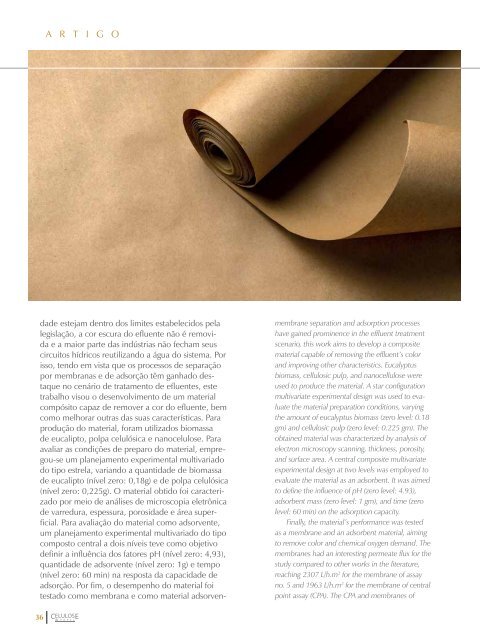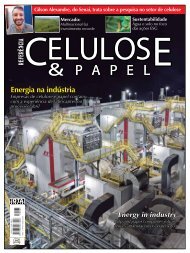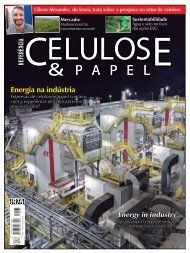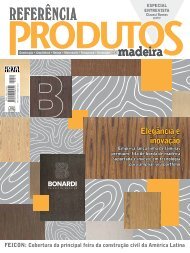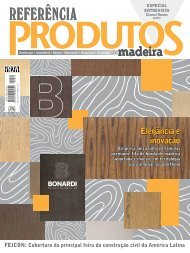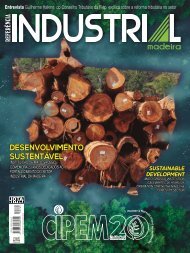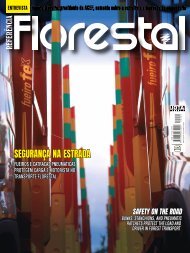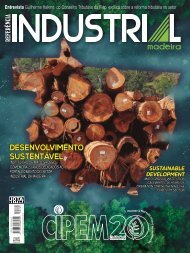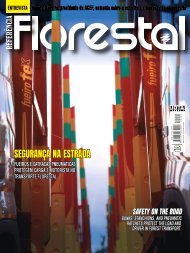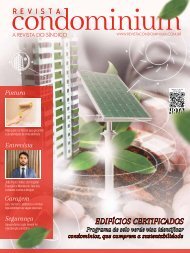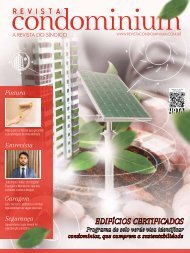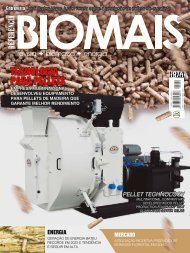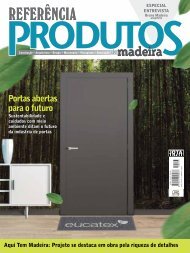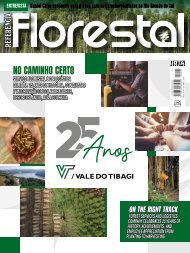You also want an ePaper? Increase the reach of your titles
YUMPU automatically turns print PDFs into web optimized ePapers that Google loves.
A R T I G O<br />
dade estejam dentro dos limites estabelecidos pela<br />
legislação, a cor escura do efluente não é removida<br />
e a maior parte das indústrias não fecham seus<br />
circuitos hídricos reutilizando a água do sistema. Por<br />
isso, tendo em vista que os processos de separação<br />
por membranas e de adsorção têm ganhado destaque<br />
no cenário de tratamento de efluentes, este<br />
trabalho visou o desenvolvimento de um material<br />
compósito capaz de remover a cor do efluente, bem<br />
como melhorar outras das suas características. Para<br />
produção do material, foram utilizados biomassa<br />
de eucalipto, polpa celulósica e nanocelulose. Para<br />
avaliar as condições de preparo do material, empregou-se<br />
um planejamento experimental multivariado<br />
do tipo estrela, variando a quantidade de biomassa<br />
de eucalipto (nível zero: 0,18g) e de polpa celulósica<br />
(nível zero: 0,225g). O material obtido foi caracterizado<br />
por meio de análises de microscopia eletrônica<br />
de varredura, espessura, porosidade e área superficial.<br />
Para avaliação do material como adsorvente,<br />
um planejamento experimental multivariado do tipo<br />
composto central a dois níveis teve como objetivo<br />
definir a influência dos fatores pH (nível zero: 4,93),<br />
quantidade de adsorvente (nível zero: 1g) e tempo<br />
(nível zero: 60 min) na resposta da capacidade de<br />
adsorção. Por fim, o desempenho do material foi<br />
testado como membrana e como material adsorven-<br />
membrane separation and adsorption processes<br />
have gained prominence in the effluent treatment<br />
scenario, this work aims to develop a composite<br />
material capable of removing the effluent’s color<br />
and improving other characteristics. Eucalyptus<br />
biomass, cellulosic pulp, and nanocellulose were<br />
used to produce the material. A star configuration<br />
multivariate experimental design was used to evaluate<br />
the material preparation conditions, varying<br />
the amount of eucalyptus biomass (zero level: 0.18<br />
gm) and cellulosic pulp (zero level: 0.225 gm). The<br />
obtained material was characterized by analysis of<br />
electron microscopy scanning, thickness, porosity,<br />
and surface area. A central composite multivariate<br />
experimental design at two levels was employed to<br />
evaluate the material as an adsorbent. It was aimed<br />
to define the influence of pH (zero level: 4.93),<br />
adsorbent mass (zero level: 1 gm), and time (zero<br />
level: 60 min) on the adsorption capacity.<br />
Finally, the material’s performance was tested<br />
as a membrane and an adsorbent material, aiming<br />
to remove color and chemical oxygen demand. The<br />
membranes had an interesting permeate flux for the<br />
study compared to other works in the literature,<br />
reaching 2307 L/h.m 2 for the membrane of assay<br />
no. 5 and 1963 L/h.m 2 for the membrane of central<br />
point assay (CPA). The CPA and membranes of<br />
36


